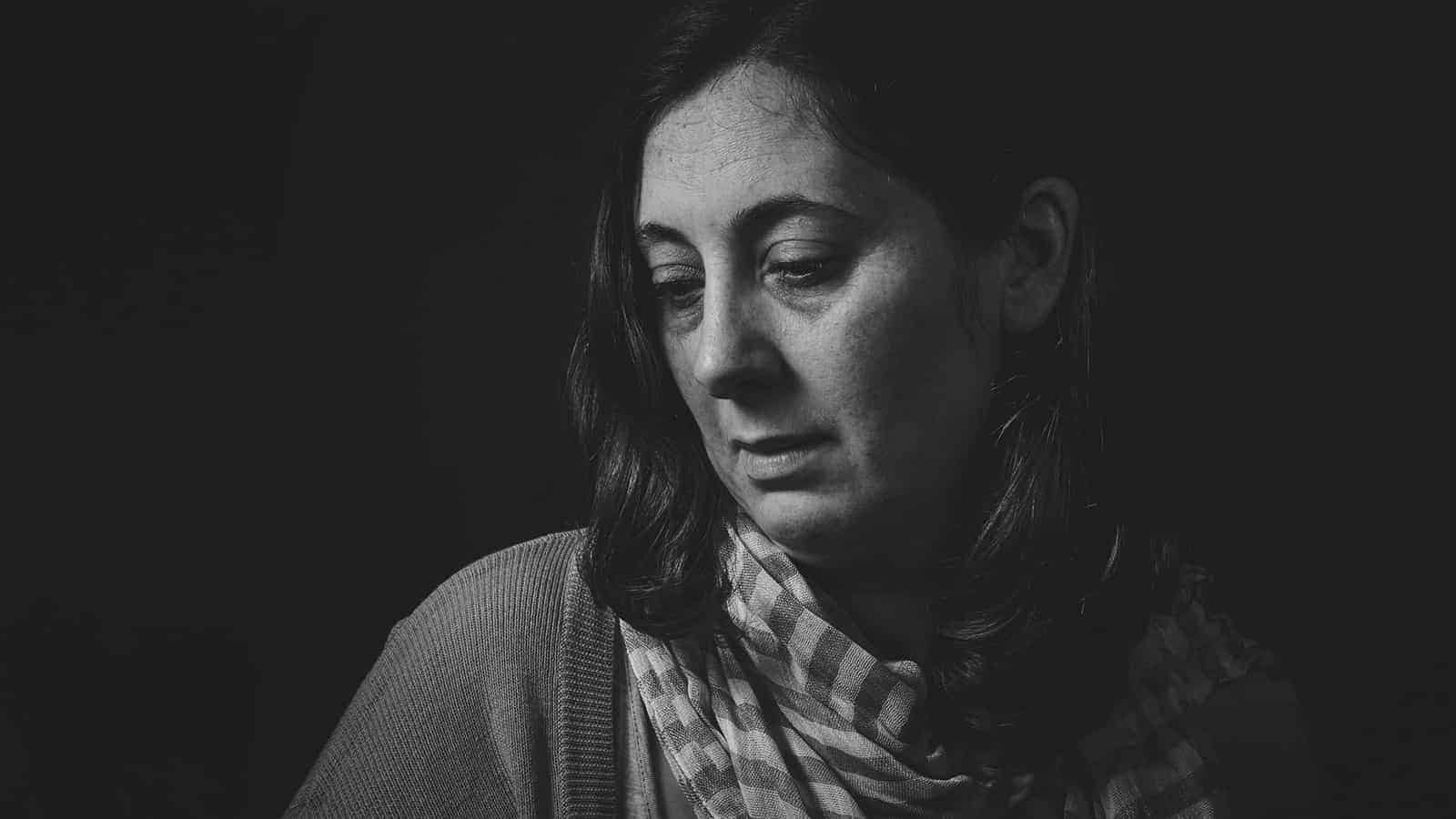Anxiety disorder is more common than you might believe.
According to the Anxiety and Depression Association of America, 40 million people suffer from the disorder, but less than 40% of those adults seek treatment. (1) When is it time to seek help or discuss new treatment options? Experts weigh in today, but please keep in mind there are more than four signs.
What is Anxiety?
At its root, it’s a feeling of intense dread, worry, or anxiousness over something in or outside of your control. It’s also completely normal to experience it from time to time, but when it becomes excessive or severe, it could mean you have an anxiety disorder.
Common Anxiety-related Symptoms
- Decline in cognitive function
- Memory problems
- Constant worry
- Fear
- Confusion
- Inability to relax
- Irritable
- Sleep-related issues, such as insomnia, nightmares, or night terrors
Common Anxiety-related Physical Symptoms
- Tension
- Weakness in the body
- Can’t catch your breath
- Chest pressure
- Stomach issues, such as stomach ache and vomiting
- Heart palpitations
- Body aches
- Sweating and/or shaking hands
- Dizziness
Who’s at Risk?
- Family history of mental illness
- Shyness is childhood
- Certain health conditions and medications, which mimic symptoms or make them more severe
- Stressful or negative events at any time in your life
Because genetic and outside factors can lead to anxiety-related disorders, anyone is at risk regardless of their age, race, or social background.
Present and hidden symptoms can start as early as childhood, but any event or negative experience can trigger it. However, doctors believe these key factors can determine your risk along with self-screening tools and an evaluation by a trained mental health professional. Remember, lacking risk factors doesn’t mean you can’t have or develop it later. (2)
7 Common Types of Anxiety-related Disorders
- Generalized (GAD)
- Social (SAD)
- Post-traumatic stress (PTSD)
- Panic
- Obsessive-compulsive (OCD)
- Phobia-related
- Co-occurring with another mental health disorder
Generalized might be the most common type. As the name suggests, it’s a general feeling of anxiousness, dread, and/or and worry. It can persist on a daily basis and usually lasts for six months or longer.
Social and phobia are other common disorder subtypes that affect a large portion of the population. Phobia-related generally occurs only when you face your fear, such as with spiders or clowns, but you don’t have symptoms any other time. Social is similar as symptoms present when around certain people or types of events.
PTSD, OCD, and panic related disorders are trickier to diagnose and treat. The symptoms fall on a larger spectrum, yet they have specific triggers.
Co-occurring disorders are common too, such as SAD and depression. One or both disorders could propel your worry and anxiousness to the point where you no longer know which symptom belongs to what illness. Keeping both in balance is important.
Risks of Untreated Anxiety Symptoms
The major risk is on your overall mental and physical health. Hospitalizations for physical and mental health are more common if you have an anxiety disorder. (3)
As stated above, it can present physical symptoms within your body. Heart palpitations, for example, puts unnecessary strain on your cardiovascular system.
Each subtype can provoke severe reactions, including those that make you a danger to yourself or others. If you have thoughts of self-harm, please call the National Suicide Prevention Hotline at 1-800-273-8255 to speak with someone. (4)
4 Signs It’s Time to Get Help for Your Anxiety
1. Your Symptoms Manifest Physically
Physical symptoms do more than disrupt your life. They can harm your body when they go untreated, and they can cost you unnecessary medical visits, tests, and medications too.
Anxiety symptoms can overlap with other medical conditions. When speaking with your doctor or naturopath, you should bring up your symptoms and any family history of mental illness. Open communication can assist in determining the right diagnosis.
If you disagree with your doctor’s diagnosis, seek a mental health professional for evaluation. Keep in mind that it can take multiple visits for a therapist or psychiatrist to diagnose you formally.
They might offer methods, therapies, and/or medications to control your symptoms. If you prefer a natural approach, you should discuss how best to incorporate herbs, essential oils, diet, and alternative therapies into your daily life.
2.You Don’t Want to or Can’t Easily Leave Your House
Home is a comfort zone for many people. Maybe you thought you were a homebody, but over time or suddenly, the idea of leaving your house sparked extreme symptoms of worry or panic.
If you fear is of visiting new places, your symptoms can hold you back and disrupt your life.
Some people can leave, but they only go to places they know well, such as to their usual stores, workplace, and loved one’s homes. Others cannot. They lose their jobs. Their personal and romantic relationships suffer greatly, and in some cases, they end when the other person doesn’t understand.
Another serious sign is that you can leave only after going through extensive rituals. This shouldn’t be confused with meditation or natural therapies that promote a balanced and healthy mindset.
This could be more prominent in individuals with an OCD related conditions that frequently and excessively check locks, stoves, and appliances. (5)
3. Your Symptoms Started or Worsened When You Joined Social Media Sites
Social media platforms bring a new era to anxiety symptoms. However, if you already have a mental illness, online platforms can make you experience the same reaction as if the people were truly in the same room as you.
While using social media less is not a bad idea, people should be able to make that choice for themselves.
Someone with social-related phobias cannot. They can experience symptoms, can develop new ones, or they can refrain from using it at all out of fear.
A trained therapist can assist you in determining whether you should avoid or employ certain methods when attempting to use social media healthily. This could include limitations on time, actual sites, or social interactions.
What will work best is for you and your therapist to determine since there is no one size fits all approach. This includes whether you should consider medications and/or alternative therapies.
Induced Anxiousness and Phobia through Social Media
Alternatively, some people become addicted to social media and their anxiety symptoms only manifest during withdrawal. In the years to come, we expect it to become another form of mental illness, possibly a subcategory of social-anxiety. (6)
Common Early Concerns and Symptoms of Social Media Use:
- Spending more than 6 hours on social media
- Interrupting, lying to, or ignoring people to check sites and alerts
- Nervousness when you can’t check alerts
- Loss of interest in other activities
- Attempts to cut back or quit social media but can’t due to symptoms
Social media can worsen other conditions or cause them too. If you have a co-occurring condition, you could be a t a greater risk, especially if you have attention deficit disorder, depression, paranoia-related disorders, obsessive-related disorders, or impulse-related disorders.
A trained therapist can assist you in cutting back on social media, learning healthy use, or if necessary, assist you in kicking your habit.
4. You’ve Tried Everything Except Therapy or You’re Ready to Give Up on Life
Everyone responds differently to treatments whether they use natural medicine, conventional medicine, or a combination.
Self-medicating with special diets, herbs, oils, and alternative therapies can help some people. Some people see great results at first, but they dwindle over time. Others notice no deviation from the severity of their symptoms.
One key factor is missing in these treatments plans: therapy.
The severity of your anxiety symptoms can be a factor as well as co-occurring illnesses. For example, someone with severe anxiety and depression might have more difficulty without the guidance of a therapist or psychiatrist.
Another example would be a chemical imbalance unrelated to diet, physical, or environmental factors. No amount of diet, herbs, natural living, and so forth will be enough to rebalance the chemicals. Instead, you might require prescription medication, but you would be able to use most natural remedies to address your other symptoms.
You’ve Tried Everything Now. There’s No More Hope! You Think Suicide is Your Only Option
If you think this, call the National Suicide Prevention Hotline (1-800-273-8255), your doctor, or emergency services. There are always options, new studies, and new treatments. Giving up on yourself will never be the answer.
Sometimes treatments take trial and error. A lot of trial and error as well as extensive therapy.
Remember, what works for someone you know might not for you. What once worked might not be enough now to maintain a symptom-free life.
Plus, you can develop or have other physical and mental conditions that can play a major role in your treatment options that you and your doctor are unaware of. Mental health and treatments aren’t an exact science, but there is always a way that’s better than self-harm and suicide. Please, seek help immediately.
Why People Might Not Seek Help Sooner
It’s impossible to determine any exact reason, but the rising costs of healthcare and unavailable healthcare could be two major reasons. A third is a stigma, but this mindset is slowly dying as more and more outreach on mental health occurs.
Denial could be a fourth, but one interesting study shows a large number of people perform mental health-related searches year round.
If you’re without insurance, check with your local health clinics and county department of health. Most staff or have a referral program based on your income for mental health services. Another option is calling around and asking therapists and psychiatrists about cash discounts or low-income programs.
Final Thoughts on Anxiety Symptoms and When to Seek Help
If your symptoms are so severe that they interfere with your life, your anxiety-related disorder isn’t under control. If you’ve never had a disorder, but you find your levels are reaching beyond a cope-able level for you, you should seek help and an official diagnosis.
Many people live with GAD or related disorders every single day. There is always hope even if your world feels impossibly dark. Speak with a trained professional about therapy and options to control your symptoms that fit your beliefs and lifestyle. Tomorrow is always a new day.



















